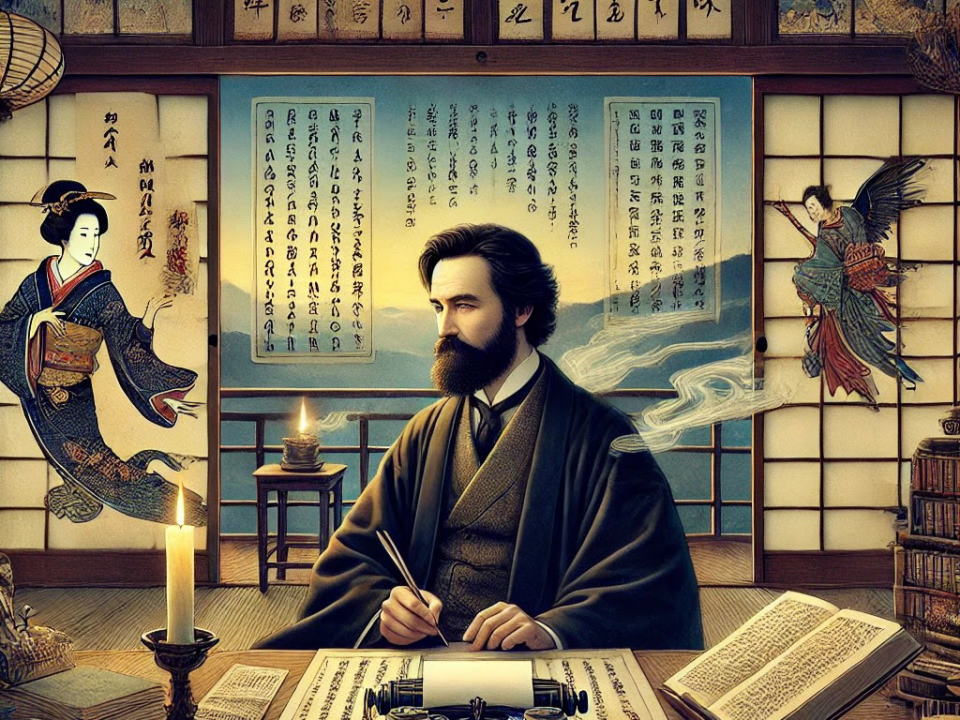
Yakumo’s literature is far more than a mere collection of stories—it radiates the charm of two distinct worlds meeting and becoming bound by a deep, unbreakable connection.
Here, the “bond of marriage” is not limited to familial love; rather, it symbolizes how contrasting elements—East and West, logic and emotion, classical and innovative—complement one another and merge into a unified whole.
Yakumo as a Cultural Crossroads
Lafcadio Hearn, known in Japan as Koizumi Yakumo, was born into a Western background yet became deeply rooted in Japanese culture, which captivated him completely.
His works blend the keen insights of an outsider with a profound reverence for Japan’s traditions and aesthetics.
In doing so, he captured a new artistic sensibility born from the encounter of different cultures.
The Japanese ghost stories and folk legends he recorded not only opened a door to an unfamiliar world for Western readers but also encouraged the Japanese to rediscover the richness of their own heritage.
A Symbol of the Bond Between Partners
In his literature, one can often find elements that evoke the image of a marital bond. Here, “marriage” is understood in a broad sense—not merely a legal or biological connection, but a relationship in which individuals from diverse backgrounds and ideologies understand and support one another.
For example, his writing seamlessly melds Western logical interpretation with Eastern lyrical sensitivity, much like a long-married couple who accepts each other’s differences while building a harmonious and fulfilling life together.
This fusion lends his works a depth and universality that continues to evoke new perspectives and heartfelt emotions in readers.
A New Frontier in Literature Through Fusion

Yakumo embodied the importance of dialogue between cultures.
He staged what might be described as a “cultural wedding,” drawing out the best qualities of both sides and establishing a groundbreaking method of expression.
Fusion of Different Perspectives
The convergence of Western analytical thought and Eastern lyrical sensibility allowed for a free and creative exchange of ideas, unbound by conventional limits.
The Spirit of Mutual Complementation
The notion that the shortcomings of one culture can be compensated by the strengths of another imbues his work with a warmth and profound depth.
Conclusion
A close reading of Yakumo’s works reveals more than exotic allure—it unveils a deep-seated humanism and a spirit of mutual understanding.
His literary world quietly advocates the importance of recognizing our differences and supporting one another—a message that remains as luminous today as it was in his time.
References
https://ja.wikipedia.org/wiki/小泉八雲 (Wikipedia – Koizumi Yakumo)
https://kotobank.jp/word/小泉八雲-58042 (Kotobank – Koizumi Yakumo)
